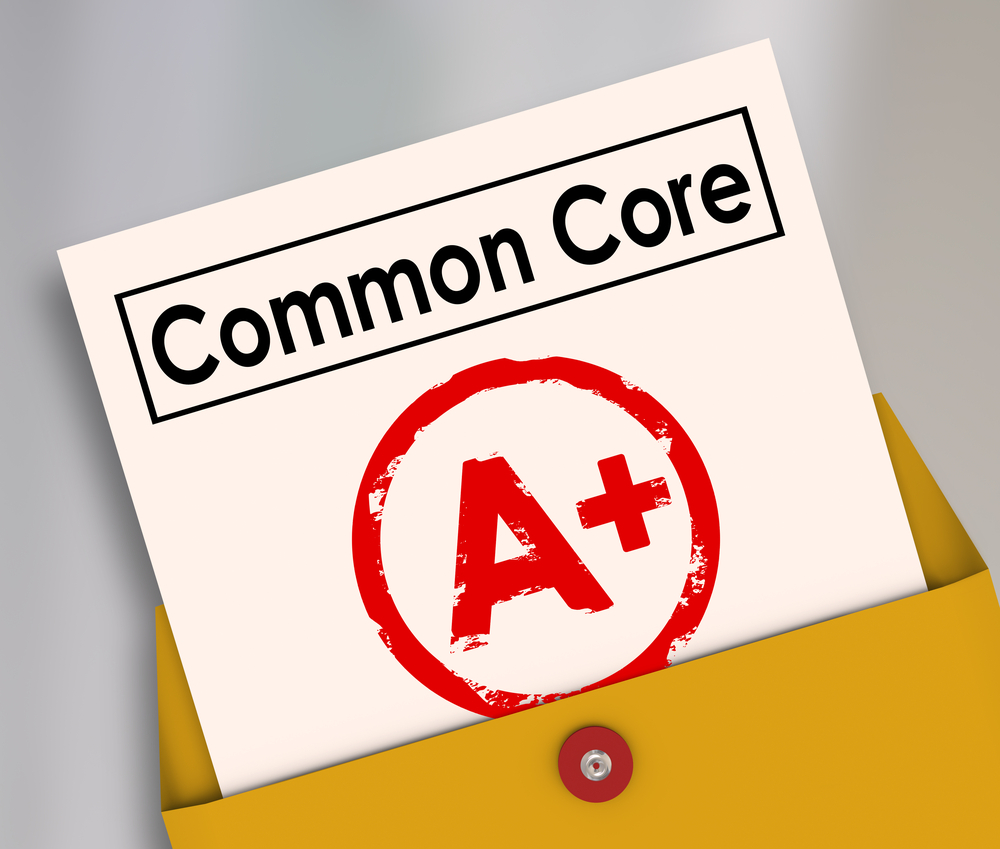Animal Classification Normal Science Worksheets for Ages 3-6
4 filtered results
-
From - To
Discover our engaging "Animal Classification Normal Science Worksheets" designed specifically for ages 3-6! These colorful and interactive worksheets cultivate young learners' curiosity about the animal kingdom, introducing essential concepts of classification, habitats, and characteristics. With fun activities, kids will explore various animal types, from mammals to reptiles, enhancing their recognition skills and vocabulary. Perfect for home or classroom use, these worksheets foster critical thinking and promote early science education. Encourage your child's love for science while building foundational learning skills! Download now to embark on an exciting educational journey through the diverse world of animals!
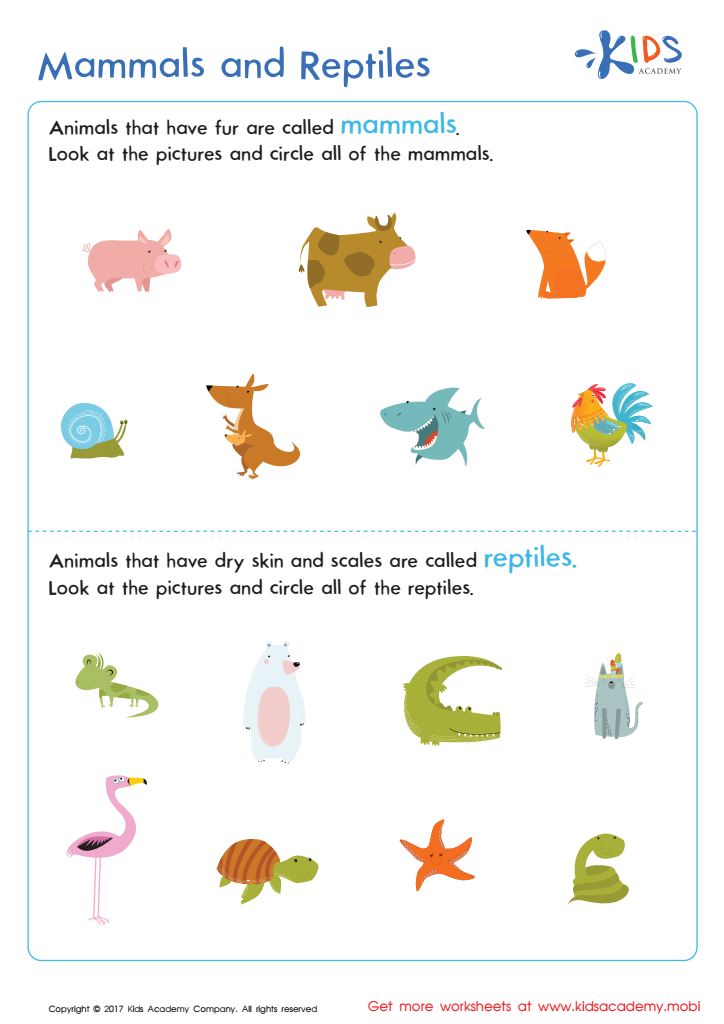

Mammals and Reptiles Worksheet
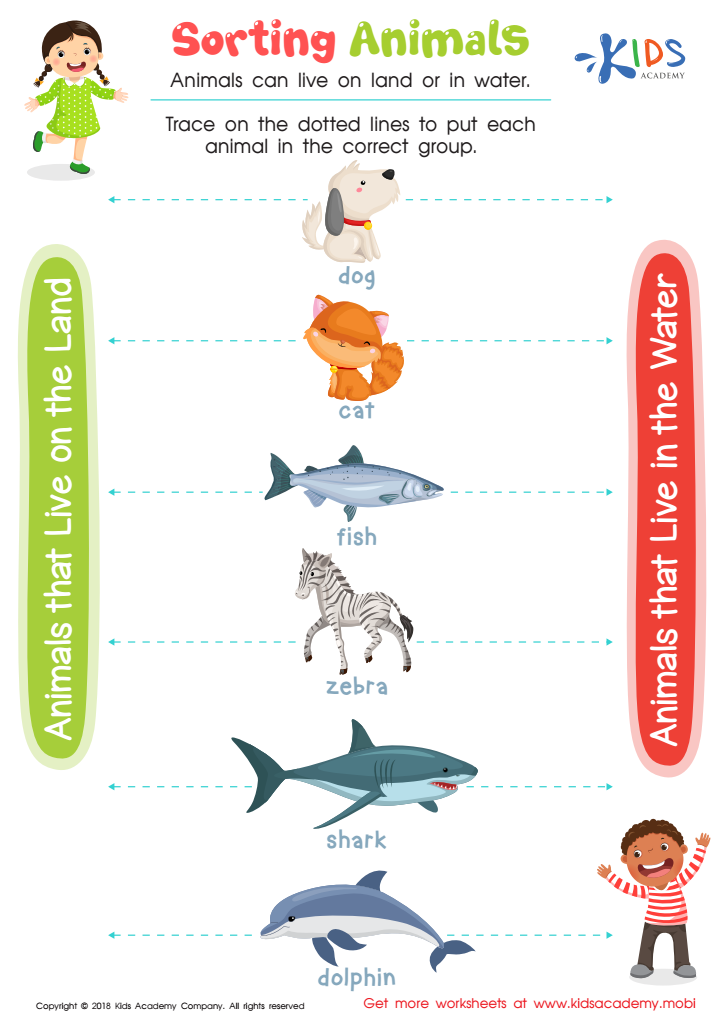

Sorting Animals Worksheet
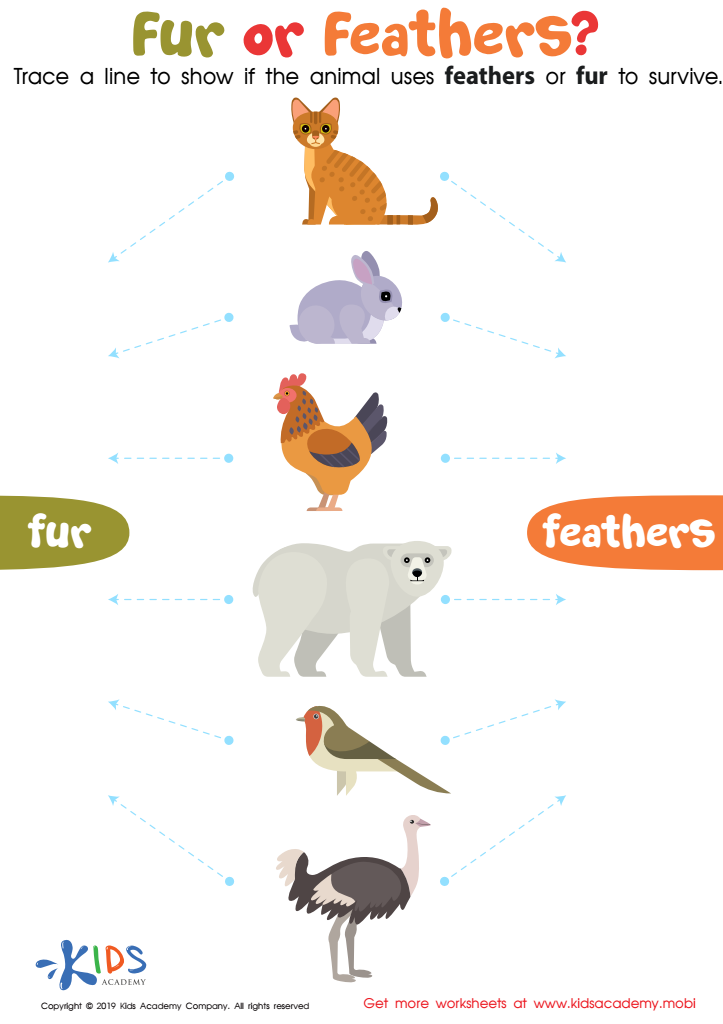

Fur or Feathers? Worksheet
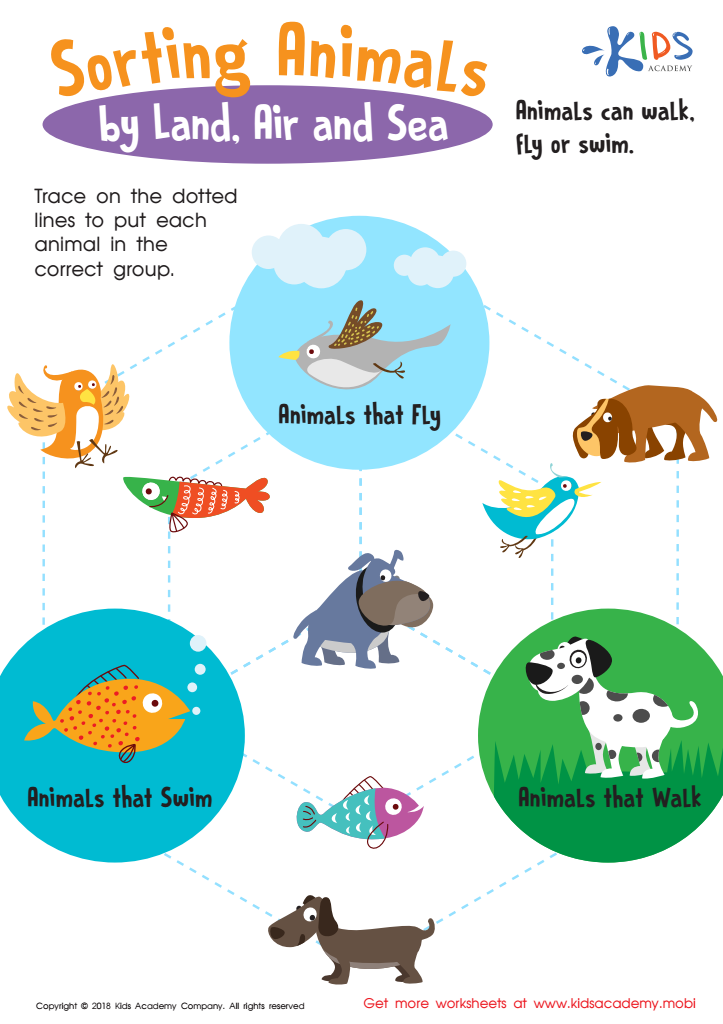

Sorting Animals by Land, Air and Sea Worksheet
Understanding animal classification is vital for young learners aged 3-6 as it lays a foundation for scientific thinking and curiosity. Introducing the concept of categorizing animals fosters critical thinking skills, enabling children to observe and ask why different animals share certain characteristics, such as habitat or physical traits. This early exposure helps children make meaningful connections with the natural world, sparking their interest in biology and ecology.
For parents and teachers, engaging children in animal classification encourages exploration, creativity, and language development. By discussing diverse animal groups like mammals, birds, reptiles, and amphibians, children can expand their vocabulary and improve their communication skills. Activities involving sorting, matching, or even drawing animals promote hands-on learning, making complex ideas accessible and enjoyable.
Moreover, understanding animal classification can lead to easier discussions about conservation and the importance of protecting ecosystems, residual learning influencing values and behaviors as children grow. Educators and parents can help nurture a sense of responsibility and wonder in young learners, emphasizing that every creature plays a role in our world. By prioritizing knowledge of animal classification, adults empower children to understand and appreciate the diversity of life around them, inspiring lifelong interest in the sciences.

 Assign to My Students
Assign to My Students







